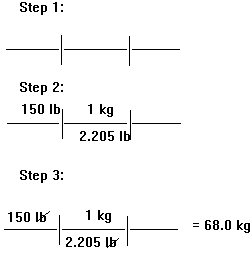Please wait while we process your payment
If you don't see it, please check your spam folder. Sometimes it can end up there.
If you don't see it, please check your spam folder. Sometimes it can end up there.
Please wait while we process your payment

By signing up you agree to our terms and privacy policy.
Don’t have an account? Subscribe now
Create Your Account
Sign up for your FREE 7-day trial
By signing up you agree to our terms and privacy policy.
Already have an account? Log in
Your Email
Choose Your Plan
Individual
Group Discount
Save over 50% with a SparkNotes PLUS Annual Plan!
 payment page
payment page
Purchasing SparkNotes PLUS for a group?
Get Annual Plans at a discount when you buy 2 or more!
Price
$24.99 $18.74 /subscription + tax
Subtotal $37.48 + tax
Save 25% on 2-49 accounts
Save 30% on 50-99 accounts
Want 100 or more? Contact us for a customized plan.
 payment page
payment page
Your Plan
Payment Details
Payment Summary
SparkNotes Plus
You'll be billed after your free trial ends.
7-Day Free Trial
Not Applicable
Renews July 15, 2025 July 8, 2025
Discounts (applied to next billing)
DUE NOW
US $0.00
SNPLUSROCKS20 | 20% Discount
This is not a valid promo code.
Discount Code (one code per order)
SparkNotes PLUS Annual Plan - Group Discount
Qty: 00
SparkNotes Plus subscription is $4.99/month or $24.99/year as selected above. The free trial period is the first 7 days of your subscription. TO CANCEL YOUR SUBSCRIPTION AND AVOID BEING CHARGED, YOU MUST CANCEL BEFORE THE END OF THE FREE TRIAL PERIOD. You may cancel your subscription on your Subscription and Billing page or contact Customer Support at custserv@bn.com. Your subscription will continue automatically once the free trial period is over. Free trial is available to new customers only.
Choose Your Plan
This site is protected by reCAPTCHA and the Google Privacy Policy and Terms of Service apply.
For the next 7 days, you'll have access to awesome PLUS stuff like AP English test prep, No Fear Shakespeare translations and audio, a note-taking tool, personalized dashboard, & much more!
You’ve successfully purchased a group discount. Your group members can use the joining link below to redeem their group membership. You'll also receive an email with the link.
Members will be prompted to log in or create an account to redeem their group membership.
Thanks for creating a SparkNotes account! Continue to start your free trial.
We're sorry, we could not create your account. SparkNotes PLUS is not available in your country. See what countries we’re in.
There was an error creating your account. Please check your payment details and try again.
Please wait while we process your payment

Your PLUS subscription has expired
Please wait while we process your payment
Please wait while we process your payment

Units
| pico | p | 10-12 | 1 picoliter, (pL) = 0.000000000001 l |
| nano | n | 10-9 | 1 nanogram, (ng) = 0.0000000001 g |
| micro | µ or u | 10-6 | 1 micrometer (µm) = 0.000001 m |
| milli | m | 10-3 | 1 milliliter (mL) = 0.001 L |
| centi | c | 10-2 | 1 centimeter (cm) = 0.01 m |
| deci | d | 10-1 | 1 decigram (dg) = 0.1 g |
| none | none | 1 | normal units without prefixes |
| kilo | k | 103 | 1 kilogram (kg) = 1000 g |
| mega | M | 106 | 1 megagram (Mg) = 1,000,000 g |
| giga | G | 109 | 1 gigameter (Gm) = 1,000,000,000 m |
| tera | T | 1012 | 1 teraliter (TL) = 1,000,000,000,000 L |
In working out calculations, units can provide an excellent source of self-correction. When you perform a calculation in any science, you will almsot always be looking not just for a number, but for a number of a specific type of unit. If the answer your work yields does not have the correct units, then you know you have made a mistake somewhere.
For instance, lets say that a person who weighs 150 lbs (a British system measurement) wants to know her weight in kilograms (a metric system measurement). Start by drawing a horizontal line, and then making vertical hash marks to form a table as in step one of the figure below.

The woman knows her weight in pounds and wants to find out what she weighs in kilograms. As seen in step two, she should enter the known weight in pounds next to the ratio of pounds to kilograms (1 : 2.205) in such a way that the units cancel one another. This means that if lbs are on top, then there must be lbs on the bottom, so that when they are divided, they cancel. Next, while carrying out the obvious mathematical operation, cancel the units. If the woman had accidentally put the ratio of pounds to kilograms in upside down (2.205 : 1), then the units would not have canceled out, alerting the woman that she had made a mistake.
Please wait while we process your payment

